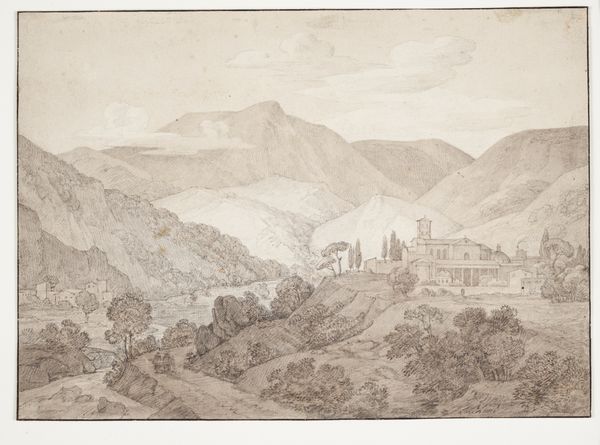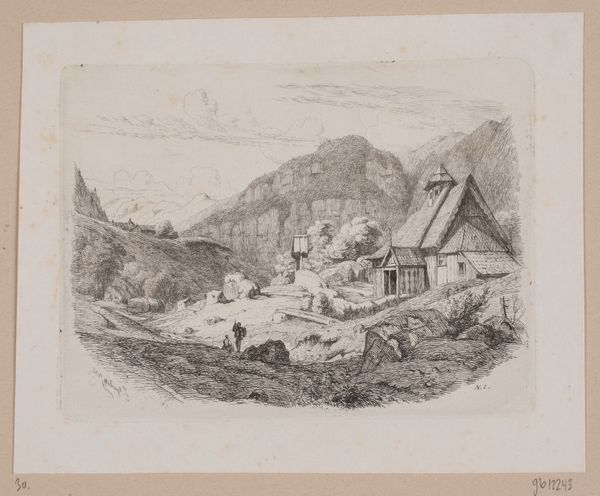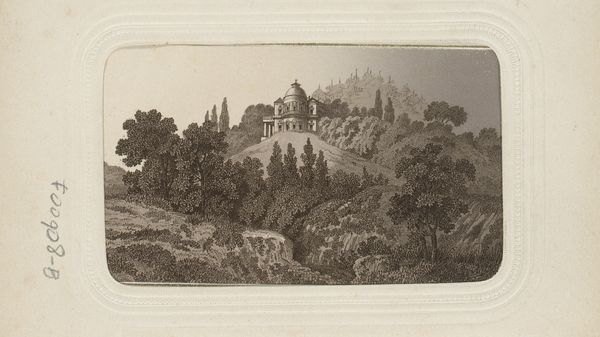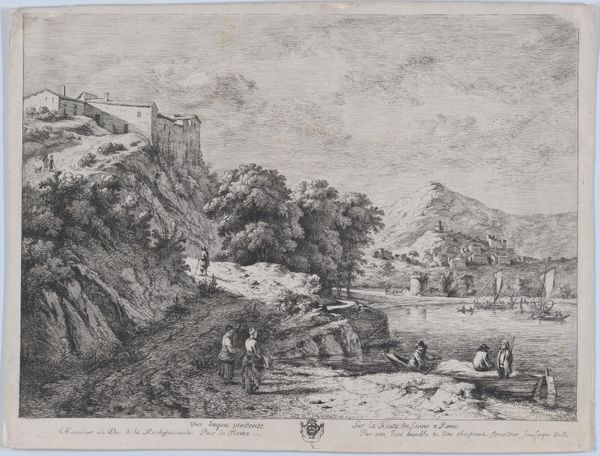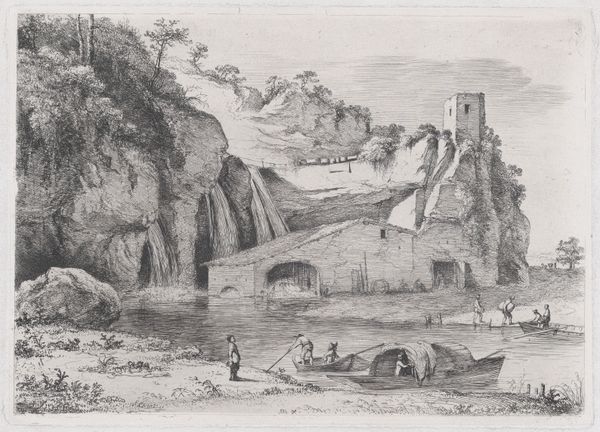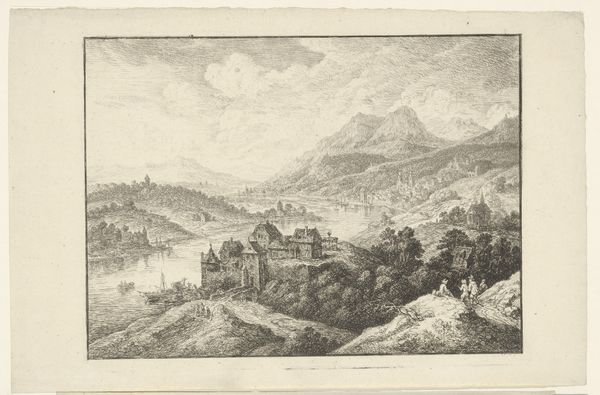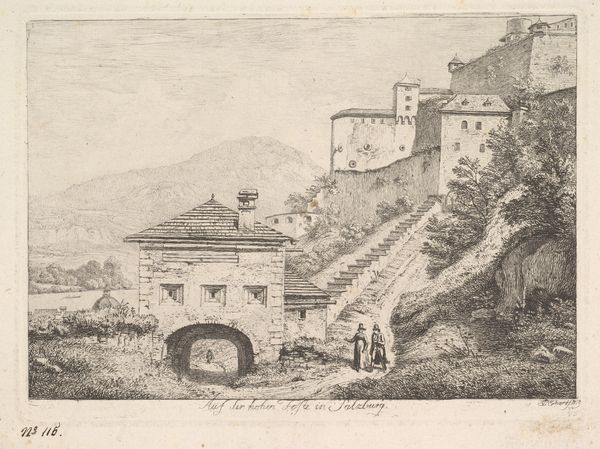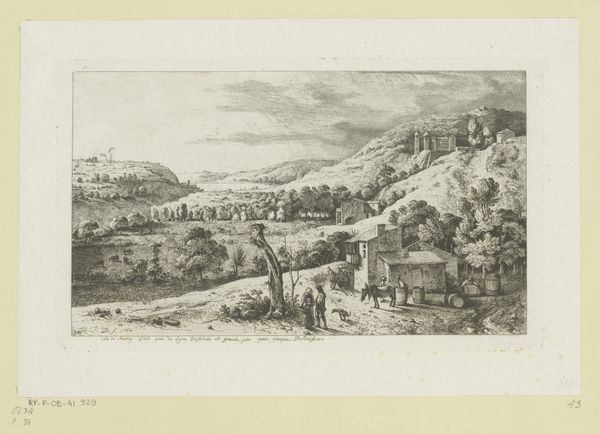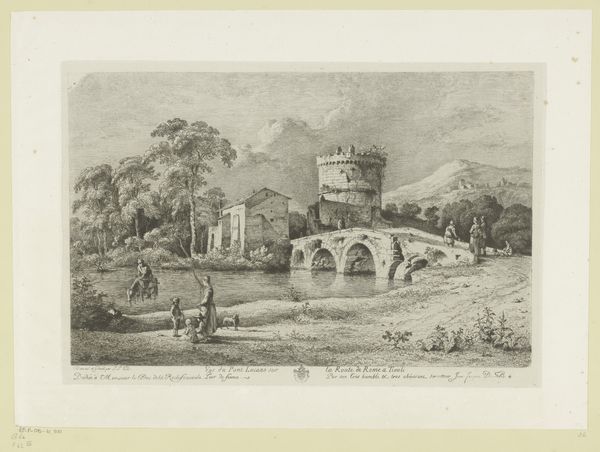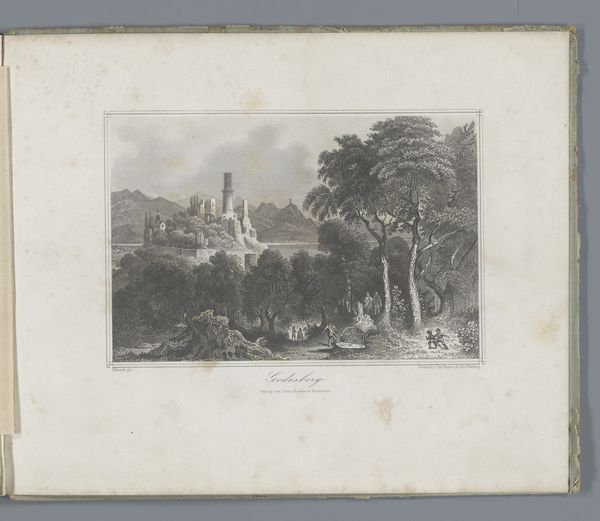
Dimensions: height 138 mm, width 222 mm
Copyright: Rijks Museum: Open Domain
Curator: What catches my eye immediately is the almost palpable weightiness of the stone in this etching. Editor: Indeed. We're looking at "Tempelcomplex in een heuvellandschap," which translates to "Temple Complex in a Hilly Landscape." It's an etching and ink drawing with touches of watercolor and colored pencil by Auguste Numans, likely created sometime between 1833 and 1880. Curator: It evokes a sense of enduring strength, doesn't it? Temples, hills… these are age-old symbols. Look how the arches create a passage, almost like a gateway, connecting the viewer to the sacred space within the walls. And the contrast of dark inks to light washes suggest great depths beyond what is apparent. Editor: I find myself wondering about the landscape depicted, where the materials for construction might have come from. The etching gives a certain impression of the relationship between natural environment and crafted structure—I am curious how Numans renders a specific place in a general style of landscape and academic art? Curator: It makes me think about the romantic era when artists used nature and ruins to prompt existential questions and to suggest the transience of human ambition, especially against the grandeur and permanence of nature and faith. I am struck by the two small figures almost ghost like walking towards that building. Editor: The textured quality Numans achieves with the etching technique really emphasizes the physicality of the stone and earthen surroundings. These temples emerge directly from the hills—materials and context intertwined! Curator: It does become a kind of cultural palimpsest, doesn’t it? An interplay between nature, culture, and representation across generations. Editor: Well, Numans's blending of drawing, etching, ink, and watercolor certainly compels one to think about how material choices underscore cultural perceptions of space and form. Curator: Precisely, it makes us reconsider our relationships to belief, nature, and the structures we create to mediate that relationship, quite powerfully. Editor: A worthy provocation through material depiction of an ancient setting.
Comments
No comments
Be the first to comment and join the conversation on the ultimate creative platform.
